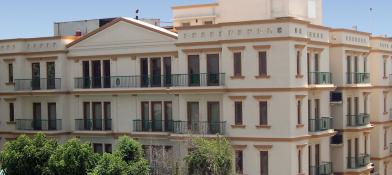Laparoscopic Gastric Greater Curvature Plication (LGGCP)
Overview:
Laparoscopic greater curvature plication (LGCP) surgery is also known as gastric plication. It is a recently developed bariatric surgery method. Bariatric surgery, aimed at weight loss, comes in two forms. One is the restrictive type, and the other is the restrictive and malabsorptive type. LGCP is a restrictive type of bariatric surgery offering an actual vertical gastric restriction without any leakage or horizontal partition.
LGCP reduces the stomach capacity by infolding the greater curvature of the stomach. The stomach is folded and tied with sutures. No cutting of stomach parts is involved in this technique. It also does not include implanting any implants or bands in the stomach. Hence, it is considered as a reasonable option for young adult patients. It is also the weight loss surgery of choice for individuals not willing to have a gastric restriction or foreign body implantation in their bodies.
LGCP is an effective method to treat morbid obesity as it produces good long-term results. They also have reasonable control of comorbidities. It has also been shown to improve the quality of life as there is no resection or removal of stomach parts.
Indications:
Individuals over 18 years old with a body mass index > 40 but < 50 are good indicators for gastric plication surgery. Individuals with BMI>35 but having comorbidities like hypertension, high cholesterol levels, diabetes, obstructive sleep apnea, and any other systemic conditions are considered for gastric plication surgery.
Contraindications:
Any individual who is suffering from super obesity with a BMI >50 kg/m2 is not suitable for this type of bariatric procedure. They can undergo some other methods like the laparoscopic Roux-en-Y gastric bypass (LRYGB) procedures.
Before the procedure:
Before undergoing an LGCP, an individual should get a surgical profile done, including blood tests, urine tests, and an Electrocardiogram (ECG), along with the physical examination and imaging tests for the abdomen. This helps healthcare professionals (HCPs) to understand the functioning of other organs, gives information about the current general health status, and helps them to identify any factors that may interfere with healing, like diabetes or any infections.
Sometimes, one needs to undergo a bariatric surgery educational program, nutritional counseling, and a psychological evaluation before undergoing the surgery. Certain medications like blood thinners and over-the-counter medications must be stopped. At the same time, surgeons might prescribe some other drugs that can prepare one for surgery. Smoking and alcohol consumption should be stopped. LAGBP is done on an empty stomach. Hence, one should stop eating or drinking 8-12 hours before the procedure.
During the LGCP:
An individual undergoing LGCP is admitted to the hospital, and the procedure is done in the operating room under anesthesia. The patient lies on the operating table in a slightly upright position at about 30-degree angulation. After cleaning the surgical site with antiseptic, minor cuts or ports are made to get access to the stomach. Then, the stomach is carefully prepared by cutting the blood vessels to access the more significant curvature of the stomach. Any other vital organs are pushed aside for easy access and visibility.
Single-plication or double-plication techniques can be used to modify the stomach size. Modified plication techniques can reduce discomfort, hospitalization stay, and post-operative symptoms. These non-absorbable stitches keep the stomach in a smaller size and shape. The later surgical site is closed with sutures. There is no necessity to place any tubes to drain fluids, and no extra tests are required to check for any leaks from the stomach.
After the LGCP procedure:
Patients are shifted to a recovery room where they are constantly monitored for any infections till their vitals stabilize. They are initially given fluids to check for any symptoms of vomiting. Medications are given for 1 or 2 days to reduce stomach acid, prevent nausea, and reduce inflammation. They are discharged once individuals can drink enough water without vomiting.
Individuals are given a liquid diet for the first week, pureed foods for the second week, semi-solid foods for the third week, and solid foods from the fourth week onwards. Regular follow-up appointments should be scheduled at 1, 3, 6, and 12 months after surgery, along with recommended blood tests.
The success of LGCP:
LGCP is considered successful if one starts losing enough weight by eating less. Weight loss takes center stage in individuals who underwent gastric plication surgery. However, surgery is only a tool, and hence, strict adherence to the instructions after surgery, followed by lifestyle modifications, should be done for long-term success.
Risks and complications:
Potential complications of surgery include nausea/vomiting, bleeding, infections, and blood clots. Other complications like rupture of the sutures, necrosis, and gastric obstructions can occur, which may require further surgery. A gastric leak can be another complication due to factors causing increased pressure in the stomach after surgery. Sometimes, certain rare complications like gastrointestinal bleeding, Thrombosis, herniation of the fundus part of the stomach, and intragastric seroma are some other complications.
Conclusion:
Laparoscopic Gastric Greater Curvature Plication (LGCP) represents a promising option in bariatric surgery for weight loss, offering a restrictive approach without needing stomach cutting or implantation of foreign bodies. With careful patient selection and adherence to post-operative guidelines, LGCP has achieved weight loss and improved overall health outcomes. However, potential risks and complications underscore the importance of thorough pre-operative evaluation and ongoing monitoring to ensure optimal results and patient safety.


















